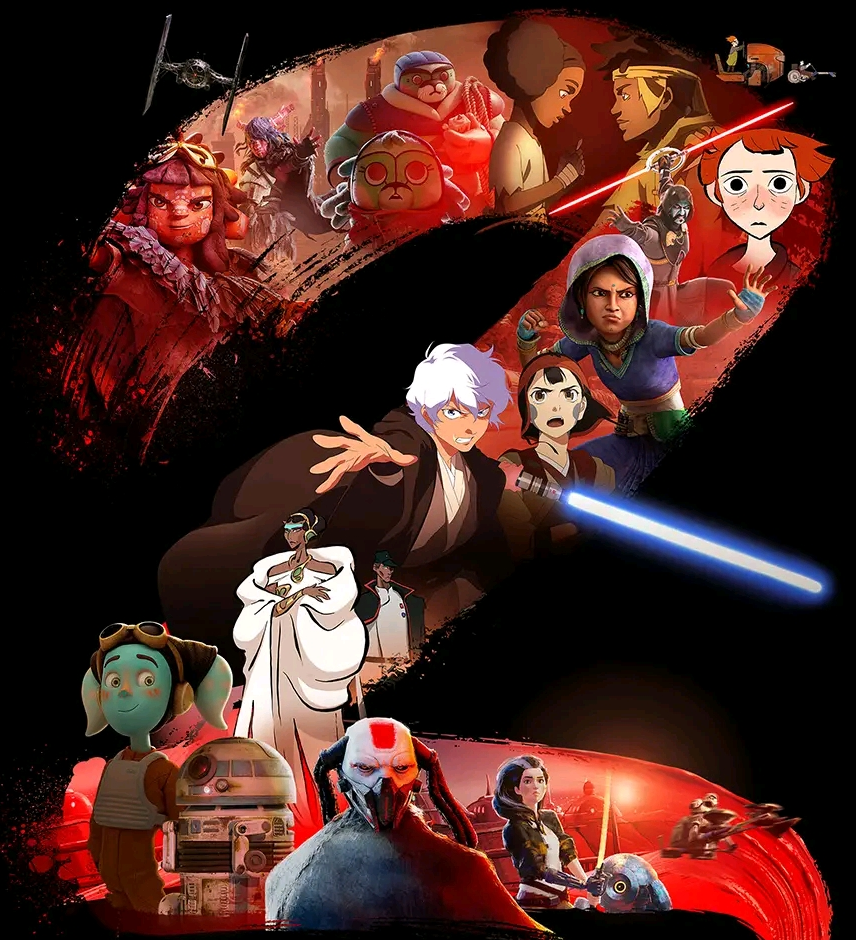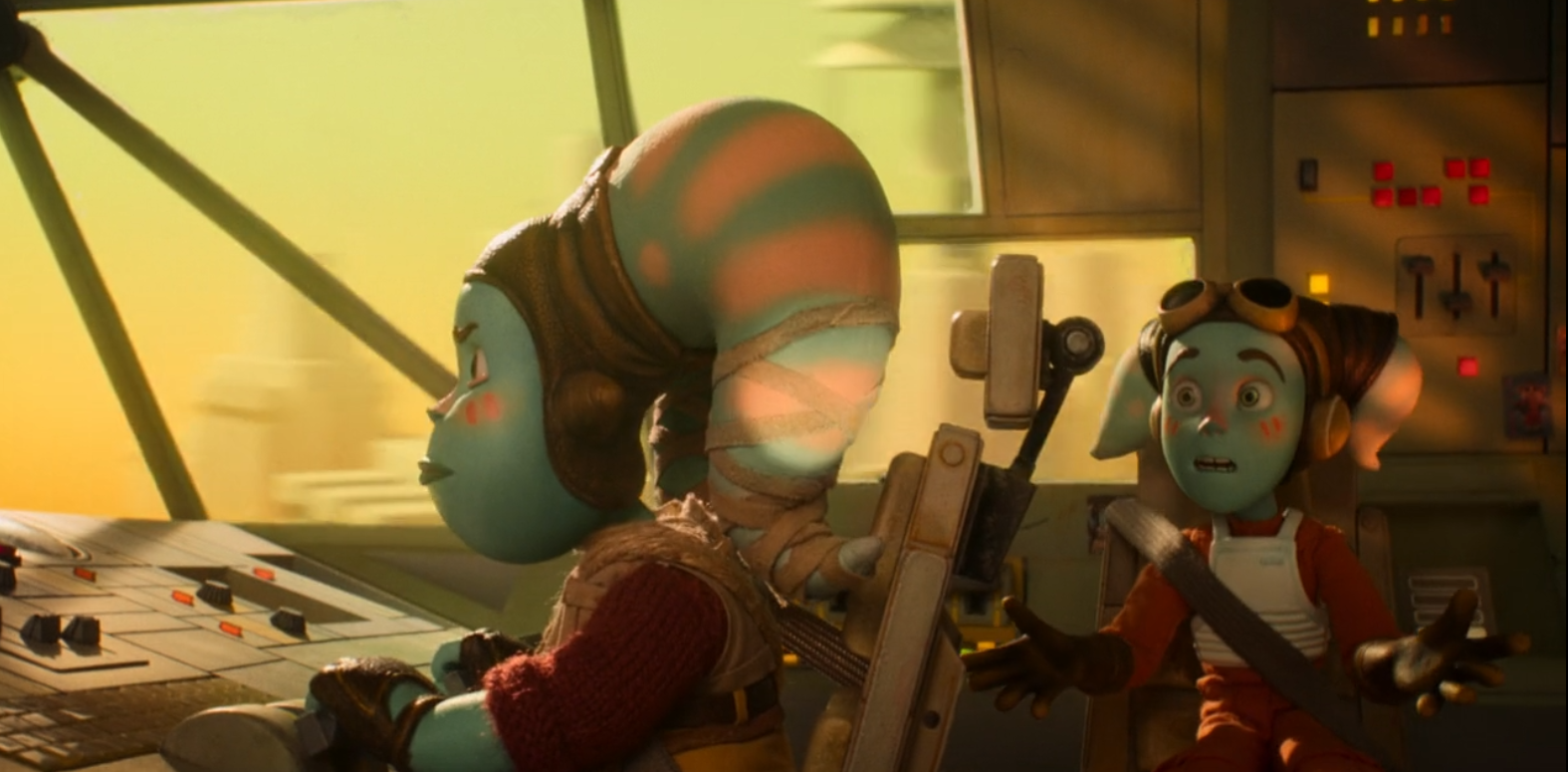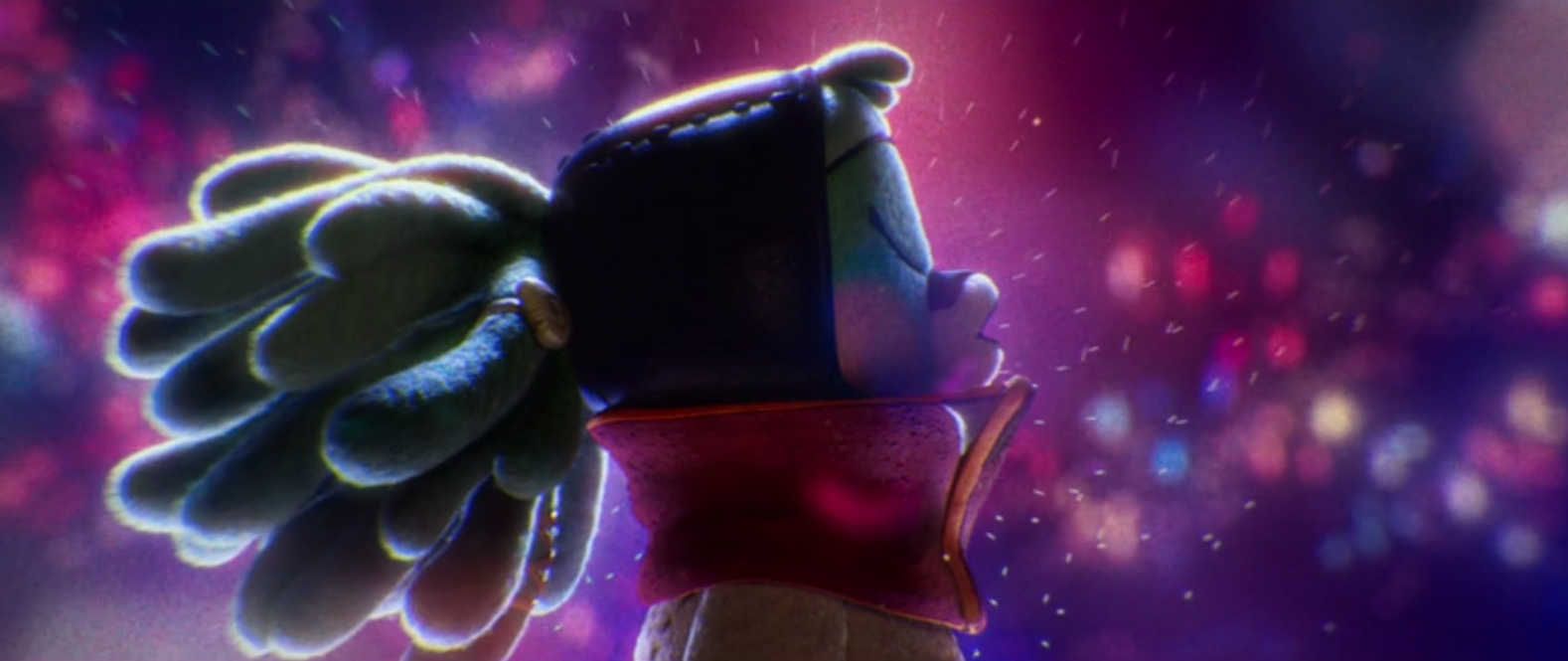Star Wars: Visions Volume 2 Review
Star Wars: Visions might just be my favorite Star Wars ever. I want Star Wars to look like this at all times. I want these kinds of stories with different voices, perspectives, and cultures shaping and telling these stories. As someone who grew up on anime, season one was what I always wanted with a mash-up of this franchise with anime. Since Akira Kurosawa's films influenced Star Wars, it felt like a match made in heaven.
Season two took this series further by expanding to other animated studios worldwide. What fascinated me was the focus and repeated themes of season two vs. season one. Keep in mind the studios do not collaborate together, so what common themes emerge are interesting to consider. With Star Wars being heavily influenced by samurai films, it made sense that the Japanese studios of season one focused more on lightsabers, kyber crystals, and the importance of that weapon.
Season two had its own overall themes that I noticed. There was a focus on family. It wasn’t the normal found family stories often seen in Star Wars, but the connection of blood relatives and the communities built around it. There were several stories about siblings as well as parent and child stories. What specifically stood out to me, unique to the season, was the sacrifice of those families when they must give up a Force-sensitive child. Or when a person must let someone go to walk a path.
Of course, there were other focuses throughout the season, but that one overarching one was something I found intriguing. But let’s rundown each short and why they were great.
Sith
I think we, as fans, will be breaking down the imagery, symbolism, and color theory of “Sith” for a long time. The shift between Lola’s view of the world and the real world was gorgeous throughout the short. As an artist constantly struggling with maladaptive daydreaming, I understand Lola's world deeply. But what touched me was how she reached out to others to share her vision, even if they were her enemy. It was a chance to connect, understand, and share her humanity with another being. At its core, this act makes us all so very human. The desire for connection, understanding, and belonging is a worthy search.
I wonder about the episode order of season two and if “Sith” was purposely chosen as the first of season two because of how season one ended. The final shot of season one was “Akakiri,” telling the downfall of Tsubaki to the Dark Side. I always consider “Akakiri” sneakily hopeful. As long as Tsubaki and his love Misa are alive, there is hope for his redemption.
Lola is at the back end of this story, and her narrative is holding onto the path we’re on. What does it take to keep walking our redemption and atonement despite the roadblocks and difficulties? How do we hold onto the light and balance it with the darkness? Lola’s story feels like the continuation of Tsubaki’s, which was a perfect bridge into Volume 2 for me.
Screecher’s Reach
I was so profoundly shaken by “Screecher’s Reach” that part of me wished that “I Am Your Mother” was the follow-up so I could laugh my intense feelings away. Without giving away the ending, the story was so carefully and deliberately built with very typical story tropes in Star Wars, only for it to rip the rug out from under you and sucker punch you in the gut. This short was such a beautiful building of hope and triumph, only to experience every level of trepidation and panic. I wanted to reach through the screen and personally rescue the characters. I was screaming, “No! Daal! You’re learning the wrong lesson! For once, don’t listen to your friend!” It was a stunning ending, shaking me to my core.
“Screecher’s Reach” left me drained, a mess of emotions, and in tears in less than 15 minutes, a sign of expert storytelling. I was still thinking about this story hours later, and it will sit with me for some time.
In the Stars
“In the Stars” was the first of several shorts focusing on family and the sacrifices made by those we love. There are so few stories in Star Wars about sisters. As someone with four sisters, this was so incredibly personal to me in many ways. The bond of sisters can be powerful, and I love my sisters even when I don’t always like them. But I always have someone on my side, like Koten and Tichina were there for each other. As many of the sister stories in Star Wars end in tragedy, having one end in triumph was beautiful.
Also, I am not surprised that several of the non-European studios have tackled the themes of colonization. While it's a narrative not unheard of in Star Wars, like Lothal in Star Wars Rebels, there is a nuance when this story comes from cultures that suffered firsthand in our own history.
I Am Your Mother
From the creators of Wallace and Gromit, I wasn’t surprised that this was a straightforward heartfelt comedy. This was the short that I wanted to rewatch when I was finished because there are so many little background jokes going on. This also makes the world feel lived in, each frame vibrant with life. Like “In the Stars,” stories of mothers and daughters are pretty few and far between for Star Wars, and I can think of only a few off the top of my head, so “I Am Your Mother” feels very special.
There are many little things I adored about this one. The design of Kalina and Anni’s home was great, as well as the reveal it’s their racing ship. The soundtrack is a banger. Having Denis Lawson return to voice Wedge Antilles in a comedic role is fantastic. Finally, Zed-1, my beloved. You are an incredible new little droid, and I already want toys of Zed-1.
Journey to the Dark Head
This is “The Ninth Jedi” of season two. What I mean by that is that it’s a complete story with an open ending that could go onto another tale. One thing I have found fascinating about Star Wars: Visions with both seasons is how few of the shorts focus on how we usually see the Jedi. “Journey to the Dark Head” has a Jedi Council, masters, and padawans, making it feel like it could be easily slotted into the canon. “The Elder” from season one was the same, which I do consider a strength of the shorts like these.
I love the journey to the heads of the statue while fighting a pursuing Sith Lord. Studio Mir is known for its animated action scenes, and that was on full display. Ara and Toul are a fantastic comedic duo that I want to see more of.
And for the shallowest note in this review, the Sith Lord was damn sexy. Like the “Oh no, he’s hot, and I can fix him” kind of sexy. Loved his design. Loved how he fought and controlled the Force. I would watch more of him… for hours.
The Spy Dancer
For eight years on my podcast, I have stated, asked, and begged for stories like “The Spy Dancer.” I wanted to see tales of what happened to actors, artists, musicians, journalists, etc., when the Republic switched over to the Empire and how that affected their livelihoods by silencing their freedoms. I’ve wanted to see these Josephine Baker-like stories of how they use their artwork to fight back. Star Wars Rebels touched on this with Sabine Wren, but her art was never the focus of her narrative. “The Spy Dancer” delivered in every way I wanted, hitting every inch of that demand.
The emotional resonance throughout Loi’e’s dancing is palpable; you can feel her anger and bitterness at the Empire coming through each movement. The traditional relationship of Loi’e being a mentor to the eager-to-fight Hétis resonated with familiar beats in the franchise. Watching Hétis rise to the occasion was triumphant as she joined Loi’e’s battle.
The way they used their art to brawl was exactly what I wanted to see. It was an incredibly unique battle as they fought with their aerial silks and weights, surprising the Imperials, who had no idea how to resist. This was my favorite battle of season two. Give me more stories like this in Star Wars.
The Bandits of Golak
Many Star Wars stories aren’t about the destination but the journey. “The Bandits of Golak” is the opposite, as the siblings Charuk and Rani's journey is about the destination. Throughout the tale, I wondered if the smaller story beats, like the raiders attacking the train, would return. But in the end, everything happening showcased the bond between Rani and Charuk and why their sacrifice meant something.
This is the only short I had a gripe with, and it wasn’t the story's fault. I wish the hidden Jedi, Rugal, wasn’t shown in the trailer. She had a hell of a reveal. Though, what’s funny is seeing her in the trailer was one of my favorite moments, making me fist-pump at her appearance.
Also, this is my new favorite Inquisitor design. Characters like Rani, Charuk, Rugal, the Inquisitor, and the world of Golak, which is so vibrant and bright, make me want all these stories to come into the canon.
The Pit
I honestly don’t know how I can put into words how compelling “The Pit” is. It reminded me of Andor in ways, and that’s because of the creative team behind it. Studio D’art Shtajio is a black-owned anime studio. When BIPOC creators tell these racially coded stories, it feels far more authentic and influential as they share their experiences. My fellow Geeky Waffles Candace and Arezou discussed this point in their Star Wars: Visions review on our YouTube channel, so check that out.
What resonated with me was this explored idea of responsibility. When you know that a person or group is being harmed and discriminated against, it is your responsibility to do something about it. If you don’t, then you are aiding the powers that be who are causing the pain. “The Pit” was a stunning short that left me speechless by the end of it.
Also, as a Star Wars Resistance fan, there is something very personal to me about hearing Daveed Diggs back in Star Wars.
Aau’s Song
Star Wars: Visions ended on a beautiful note. Again, while I think season one’s “Akakiri” is far more hopeful than people give it credit, “Aau’s Song” was more of what I expected for an ending. Star Wars is built on hope, which is what this finale filled me with. The art style with the felt-like look of the characters was gorgeous, and the short felt like a child playing with their toys.
Aau’s costume design did so much of the work. Little animated actions, like her father covering her mouth with her shirt collar to silence her, helped sell the story. Aau knows she has a calling; throughout the short, she has to build the courage to use her voice. It was a straightforward but effective storytelling.
Finally, Jedi Master Kratu was an awesome addition. She really reminded me of Sav Malagán from The High Republic. Visions always give us great Jedi, and Kratu joined their ranks.
What was your favorite Star Wars: Visions short? Let us know in the comments!

















